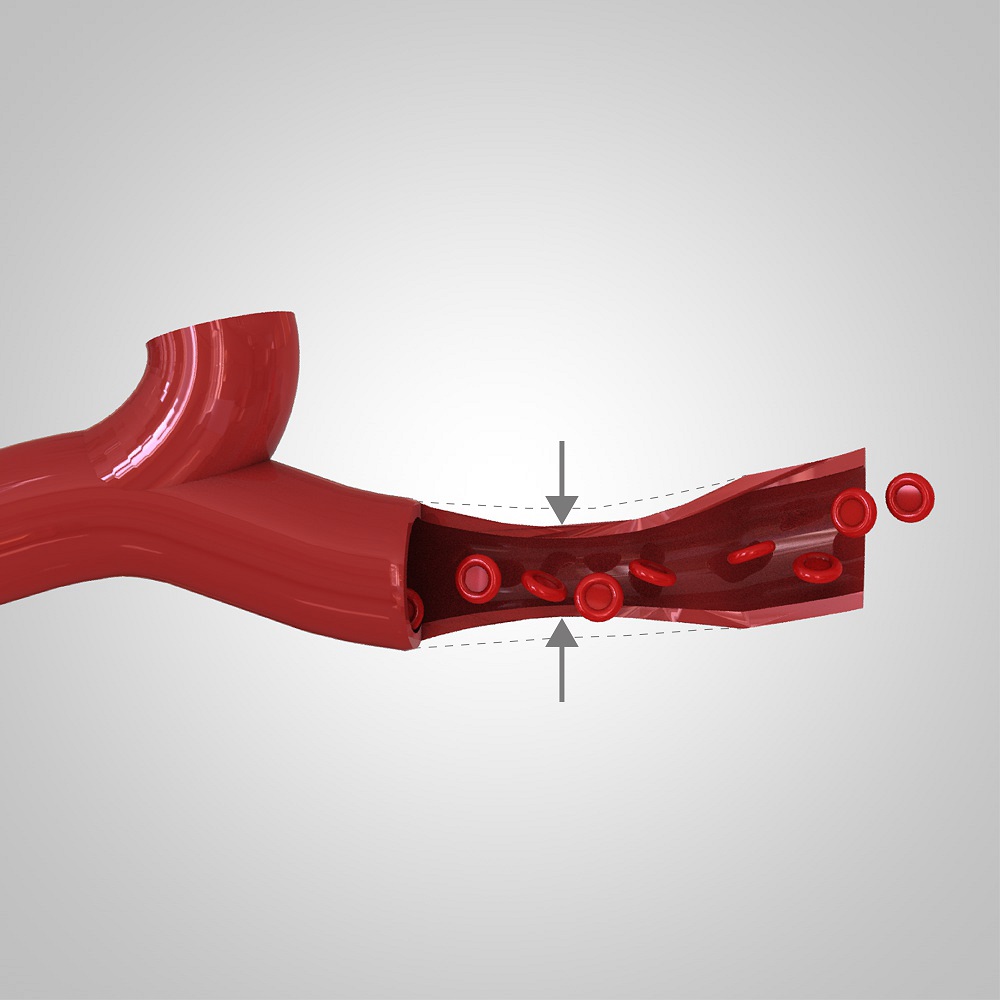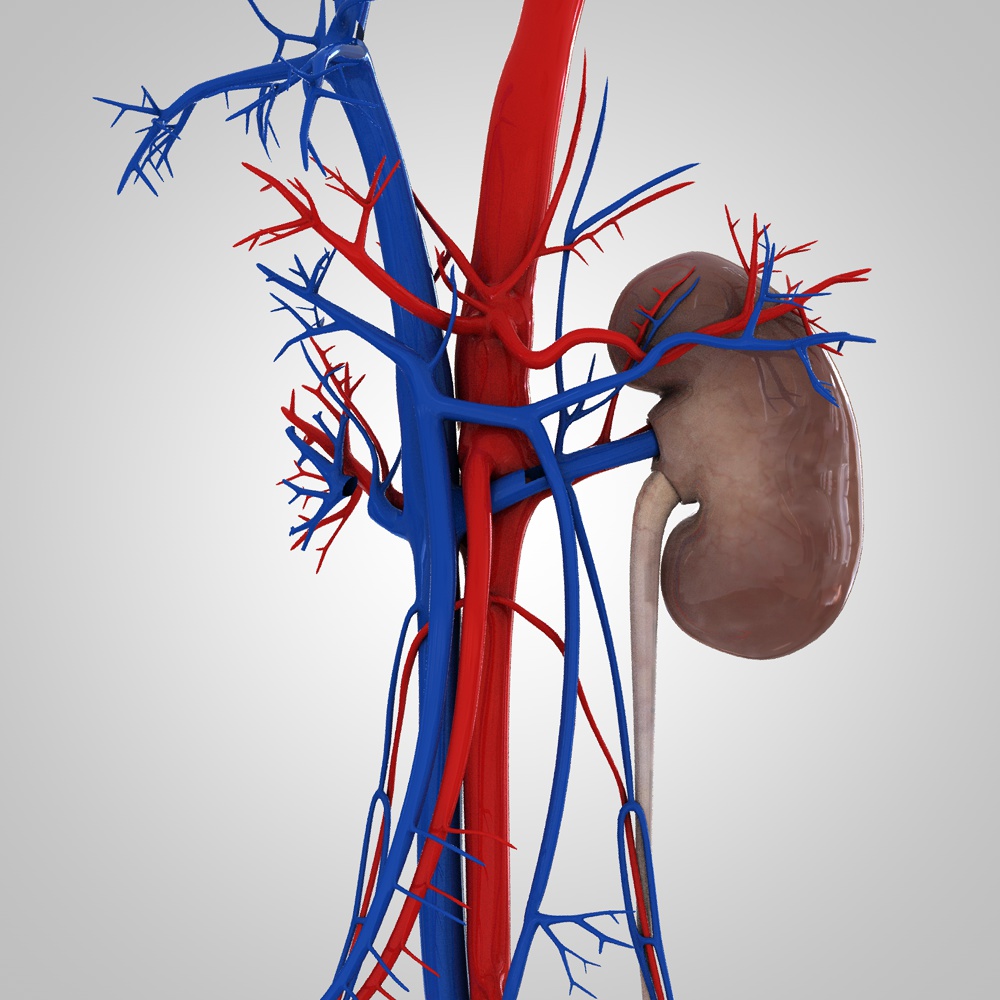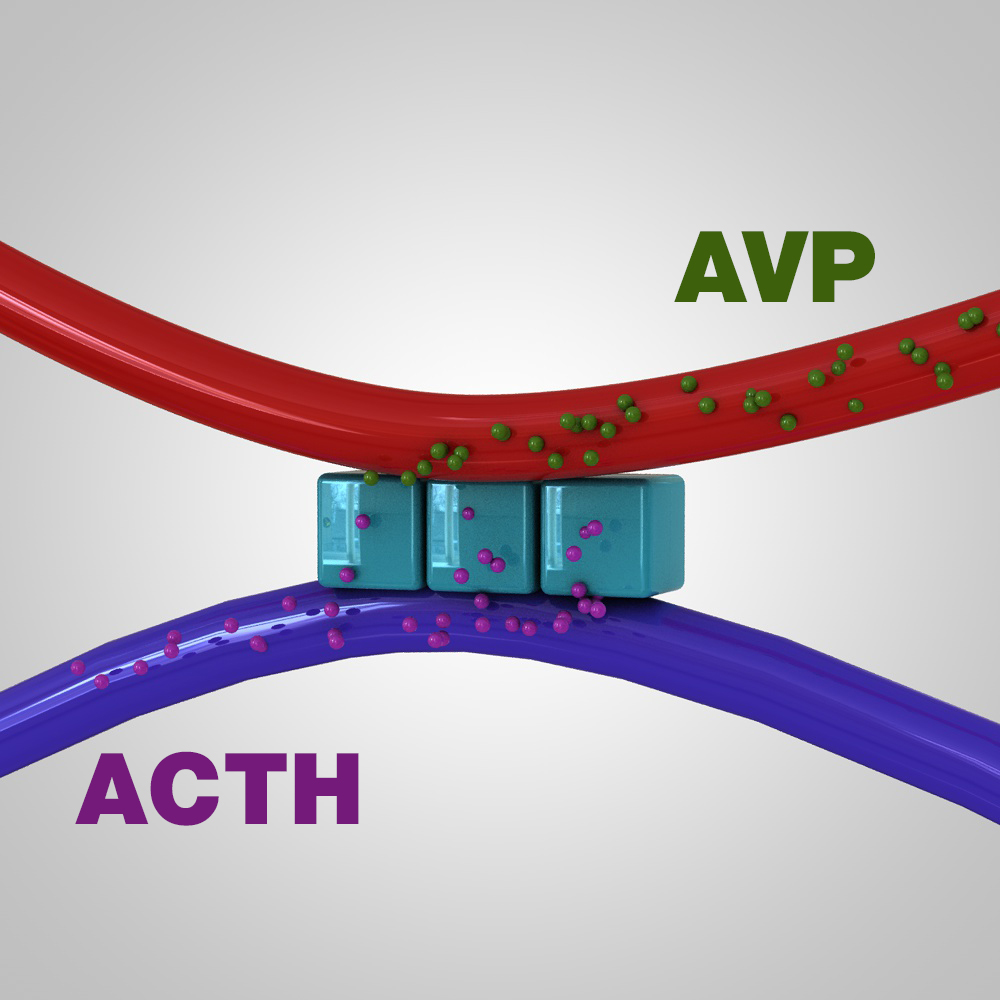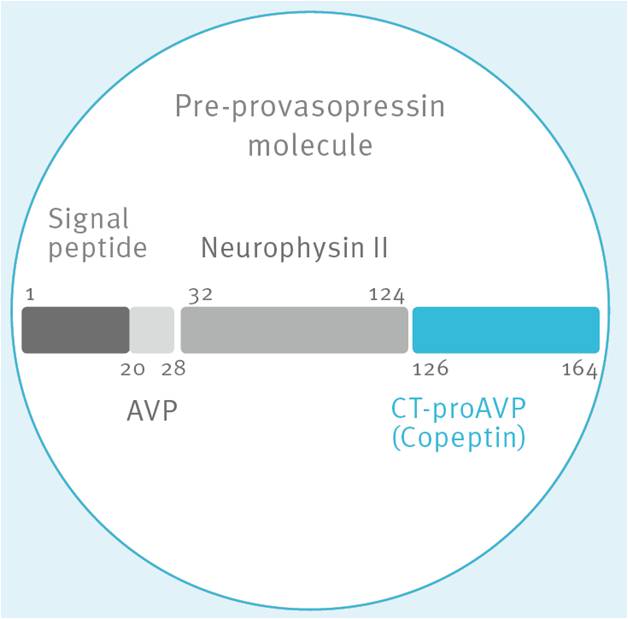Copeptin: Synthesis
Pathophysiology of Copeptin release
Pro-AVP, the precursor peptide of AVP and Copeptin, is produced and released by two endocrine mechanisms, which are distinct, but may have some anatomical interaction at the neuronal level.
AVP and Copeptin release in hypothalamus and pituitary and its effects
AVP/Copeptin release from posterior pituitary gland (red dots pathway)
When released by the posterior pituitary gland, the precursor peptide pro-AVP is produced in the magnocellular neurons of the supraoptic and paraventricular hypothalamic nuclei. During axonal transport through the infundibulum to the posterior lobe of t he pituitary gland, AVP, neurophysin II, and copeptin are processed from the precursor peptide (see Figure 2).
Pro-AVP is subjected to a four-enzyme cascade to reach the bioactive conformation of mature AVP.Ref-1 During this process, copeptin and neurophysin II seem to help in the correct folding of AVP.Ref-2 Processing is usually complete at the level of the neurohypophysis.Ref-1 All three peptides are subsequently secreted from the neurohypophysis upon hemodynamic or osmotic stimuli; in particular once released into circulation, AVP exerts its peripheral effects by binding to tissue-specific G-protein-coupled receptors (GPCR). The V1 receptor, which mediates arterioral vasoconstriction and the V2 receptor, which is responsible for the antidiuretic effect of AVP in the kidney.
AVP/Copeptin release from anterior pituitary gland (blue dots pathway)
When released by the anterior pituitary gland, the precursor peptide is synthesized and processed in the parvocellular neurons of the hypothalamus, an area where releasing hormones, such as corticotropin-releasing hormone (CRH), are also produced. AVP produced by this mechanism is subsequently released into the pituitary portal system at the eminentia mediana and acts immediately on the endocrine cells of the adenohypophysis, by binding to its V3 (V1b)-receptor. The complex stimulation of the humoral stress response, resulting in adrenocorticotropic hormone (ACTH) and cortisol release, has been attributed to a synergistic effect of CRH and AVP.Ref-3-6 This redundant or “backup” system of two hormones from the hypothalamus for the release of ACTH underlines the physiologic importance of the endocrine stress response
Further links
References
Ref-1: Acher R, Chauvet J and Rouille Y. Dynamic processing of neuropeptides: sequential conformation shaping of neurohypophysial preprohormones during intraneuronal secretory transport. J Mol Neurosci. 2002; 18: 223-228.
Ref-2: Repaske DR, Medlej R, Gultekin EK, Krishnamani MR, Halaby G, Findling JW and Phillips JA, 3rd. Heterogeneity in clinical manifestation of autosomal dominant neurohypophyseal diabetes insipidus caused by a mutation encoding Ala-1-->Val in the signal peptide of the arginine vasopressin/neurophysin II/copeptin precursor. J Clin Endocrinol Metab. 1997; 82: 51-56.
Ref-3: Gillies GE, Linton EA and Lowry PJ. Corticotropin releasing activity of the new CRF is potentiated several times by vasopressin. Nature. 1982; 299: 355-357.
Ref-4: Rivier C and Vale W. Modulation of stress-induced ACTH release by corticotropin-releasing factor, catecholamines and vasopressin. Nature. 1983; 305: 325-327.
Ref-5: Rivier C and Vale W. Interaction of corticotropin-releasing factor and arginine vasopressin on adrenocorticotropin secretion in vivo. Endocrinology. 1983; 113: 939-942.
Ref-6: Milsom SR, Conaglen JV, Donald RA, Espiner EA, Nicholls MG and Livesey JH. Augmentation of the response to CRF in man: relative contributions of endogenous angiotensin and vasopressin. Clin Endocrinol (Oxf). 1985; 22: 623-629.




